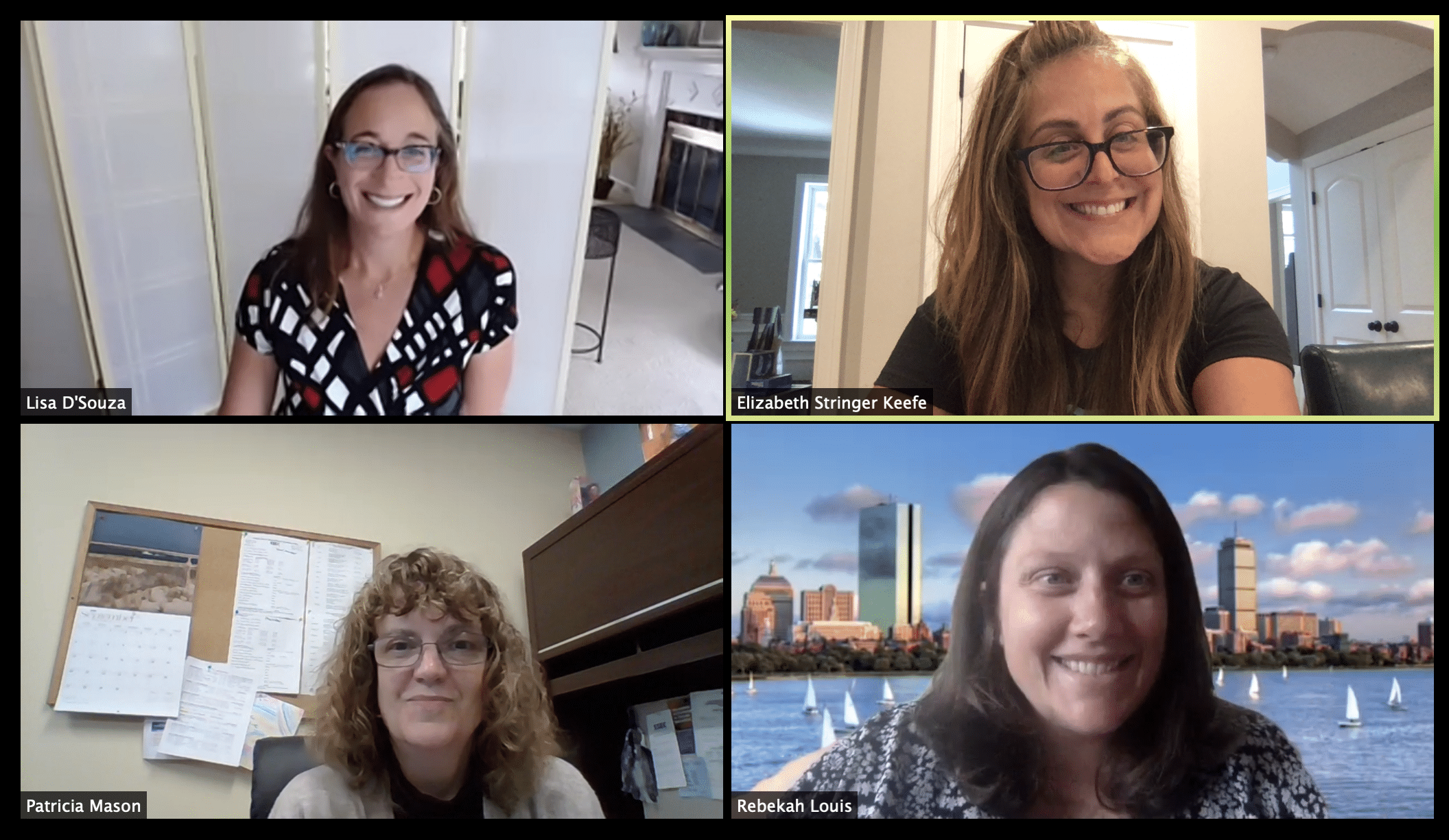Teaching and Learning During Crisis: Collaboration for the Collective Good

The text of this article is adapted from Project SOLVE’s free resource, Strategies for Virtual Education: Resources for Educators and Teacher Educators.
Project SOLVE (Strategies and Opportunities for Leading Virtual Learning) is a small inquiry research group comprised of Massachusetts-based teacher educators and PK-22 practitioners who came together in response to widespread school closures, the result of the coronavirus pandemic of 2020 that forced PK-22 teacher and teacher educators’ sudden use of technology into educational and instructional planning and decisions. The group was formed in response to widespread inequity, an urgent need for increased training for teachers, uneven resources, and lack of practical solutions to help us move forward as a field. Members brought varied expertise to the table: PK-22 experience and teacher preparation, as well as a combination of technology, general and special education expertise, and work in equity and social justice education. Harnessing the group’s collective experience, expertise, and resources helped to chart a path forward instead of waiting for direction, a pattern of treading water that we all found ourselves in and frustrated by.
While many teacher preparation programs had the technology and the means to support teacher candidates to ensure reasonable course completion and academic integrity during the spring semester of 2020, it was clear that teacher education writ large was not entirely prepared for the sudden pivot to a different kind of preparation involving the skills and knowledge to teach in remote, hybrid, and virtual environments. The international health crisis put many of teacher education’s shortcomings on full display, including its general reluctance to embrace digital technology and digital teaching competencies as part of teacher preparation. As the pandemic unfolded, the widespread inequity, uneven resources, inaccessible education and pervasive lack of practical resources made clear the health crisis was also inextricably linked to deeply rooted systemic racism in the United States. Working entirely by video call and a shared collaborative folder, Project SOLVE focused on identifying challenges facing teachers and teacher educators, and proposing equity- and inclusivity-focused solutions through a practical free resource designed to support teachers and teachers educators.
“I found this to be an incredibly helpful resource all around … all of the information on supporting preservice teachers in the field is detailed and very helpful,” said Sara Kaka, assistant professor of education and director of Adolescent to Young Adult and Multi-Age Teacher Education Programs at Ohio Wesleyan University. “I found myself drawn to the section on Preparing Equity-Minded & Inclusivity-Focused Teacher Candidates in Virtual Environments. While our program strives to do this in a traditional environment, it has been challenging to translate this practice into the online environment … information on how to apply these lenses (being equity-minded and inclusivity-focused) in a virtual environment continues to assist me in better supporting my preservice teachers as they navigate these waters.”
Given that the pandemic was likely to have a lasting impact on the knowledge and skills needed by future teachers, it was essential to work collaboratively to solve the challenges faced by teachers and teacher educators. Project SOLVE centered around utilizing PK-22 and higher education partnerships to brainstorm and research the challenges teachers and teacher educators were facing. The indelible impact of school closures, continuing virus transmission into fall, and uncertainty regarding the ability to sustain in-person instruction absent a vaccine in the 2020-21 academic year made reopening plans challenging in both the short term and the longer term. This signaled two urgent changes needed in teacher preparation programs: understanding the current and future role of teachers and considerations about what the changing role could mean for teacher preparation programs in their work developing teacher candidates’ digital competencies.
These changes require a necessary shift in perspective about the “real role” of teachers being limited to in-person instruction, with practical and field-based experiences focused solely on this kind of instruction. While eventually a vaccine will help to move us beyond the current crisis, the possibility of future disruptions clearly exist, forecasting the possibility of virtual teaching as part of the role of future teachers. This also requires the inclusion of digital teaching competencies into teacher preparation programs’ coursework and fieldwork, and an understanding about what “good teaching” looks like in this environment. Future research is needed, but there is an excellent base to draw from scholars who have been studying online and virtual instruction, design, and programming for many years.
While these changes may require major adjustments in teacher preparation programming, ignoring the clear need will contribute to inequity and ineffectiveness in school experiences for PK-22 students. Shifting in this way will ensure that teacher educators can protect the integrity of teacher preparation while at the same time acknowledging the need for change.






